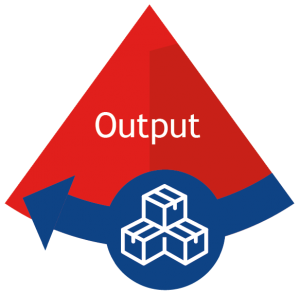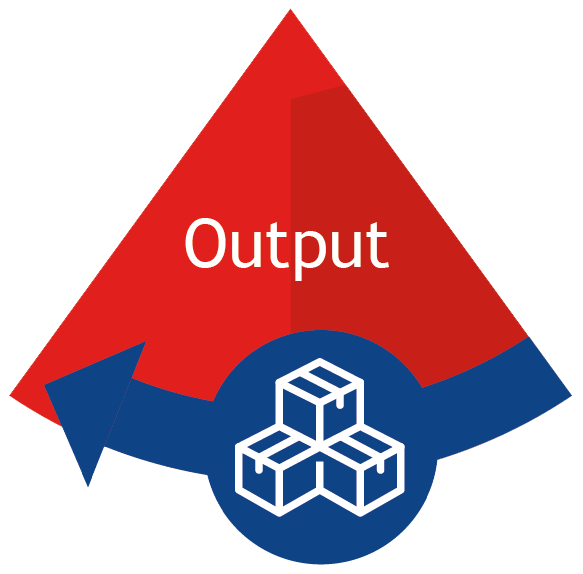In the previous blog, we introduced the third stage of the business transformation model VAPORS, called ‘Progress’. In this blog, we will explain the fourth stage, ‘Output’. As a reminder, the VAPORS Model consists of 6 stages:
– Value
– Assign
– Progress
– Output
– Results
– Supervision

‘Output’ are the deliverables of the Progress stage. For example, an improved process, implemented software, a new warehouse built, reduced throughput time. Most output is tangible and can be measured after delivery in terms of timely delivery, within budget and within required quality.
With traditional project management (waterfall) approaches, output could only be measured very close to the final delivery and closure of the project. Leaving the business very little time to test, check and use the output. Increasing the risk of a very short timeframe to resolve any issues, causing projects to delay, budget overruns and frustrated and annoyed users.
With the latest project management approaches (like agile, SAFe), output will be generated in a constant stream of short cycles of development work (1 to 2 weeks of throughput time). Which allows the business to interact in a higher frequency with (partial) deliverables and adjust where possible. Resulting in the final delivery of the output as agreed (according to specifications) and users feeling more empowered and involved.
Irrespective of the project approach, the time needed to set up proper User Acceptance Testing (UAT) and conduct the UAT should not be underestimated. From experience, we can tell that the testing of the output always takes much more time (in preparation and in performing the tests). Resulting in possible delays of delivery, budget overruns and unavailability of key resources. A good preparation upfront pays off during the time scheduled for performing the UAT’s.
Upfront documentation of what is needed (requirements, UAT’s) is crucial to test the delivered output based on the expectations. By formalising these very early in a project (that is, write these down and have these formally approved), the benchmark will be established to measure the output. Over time, these requirements can change (learning organisation, changed environments) and these changes need to be considered as early as possible into the project. This upfront documentation creates the measure stick to measure the quality.
Output drives results, the tangible but also intangible benefits like happy users, a higher productivity, fewer errors and reworks. Where output is (mainly) the tangible product of a project, results can be generated long after a project has ended. For example, in the M&A market where two IT landscapes need to merge. Long after the merger of the IT systems, benefits still can be produced months after this merger. Think of less hard- & software costs (fewer providers), improved performance (one way of working), improved sales (cross-sell).
Different blueprints can be used, for example well-defined User Acceptance Testing (UAT) and Quality Control. And our toolkit holds several tools for this stage to be used, like:
– Double Loop Learning
– Congruence Framework
– AIDA
– ….and many more
These blueprints and toolkits make it easy to support the processes in this stage and make sure nothing will be left out.
‘Output’ is the fourth stage of our business transformation model and covers the creation of the project deliverables which can be measured after delivery in terms of timely delivery, within budget and within required quality. The following stage is ‘Results’, the subject of our next blog.










0 Comments